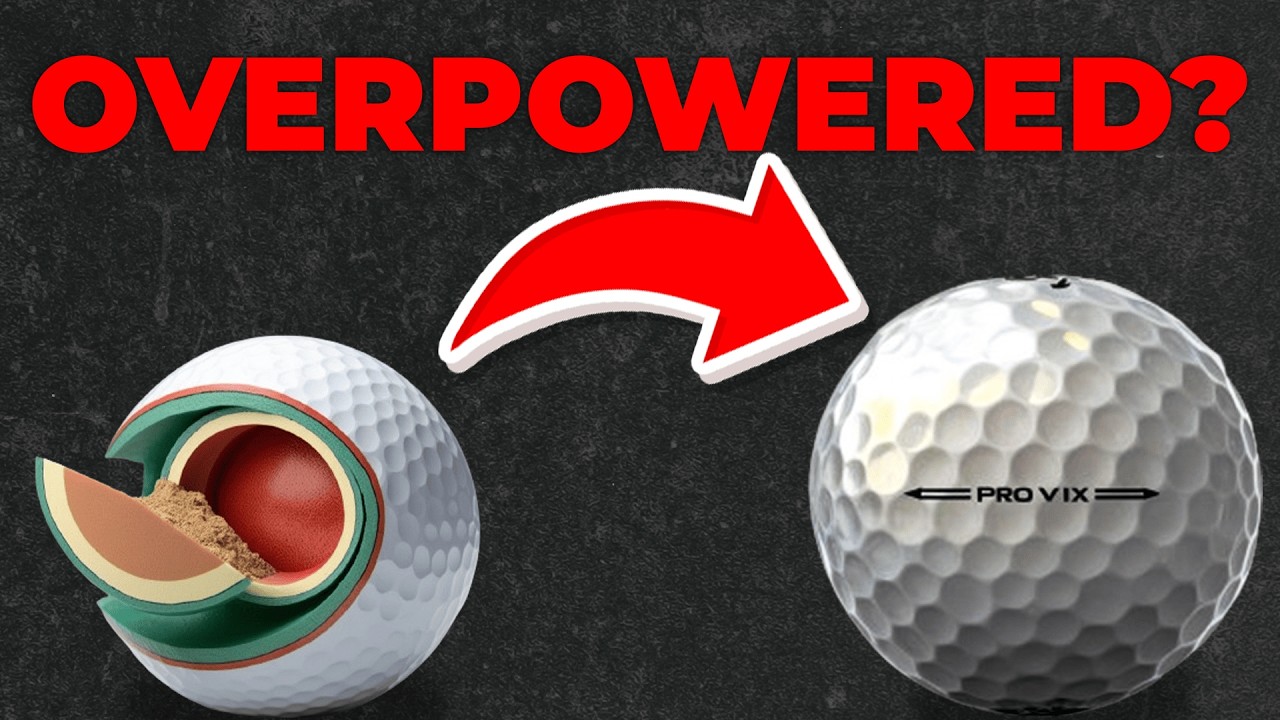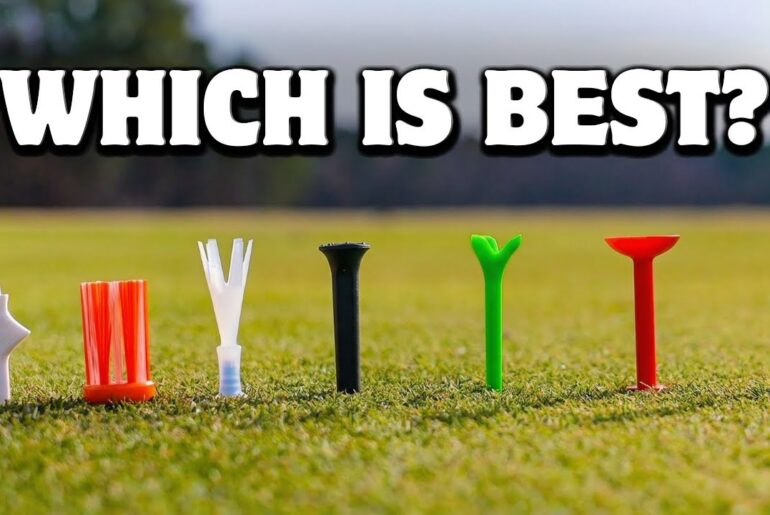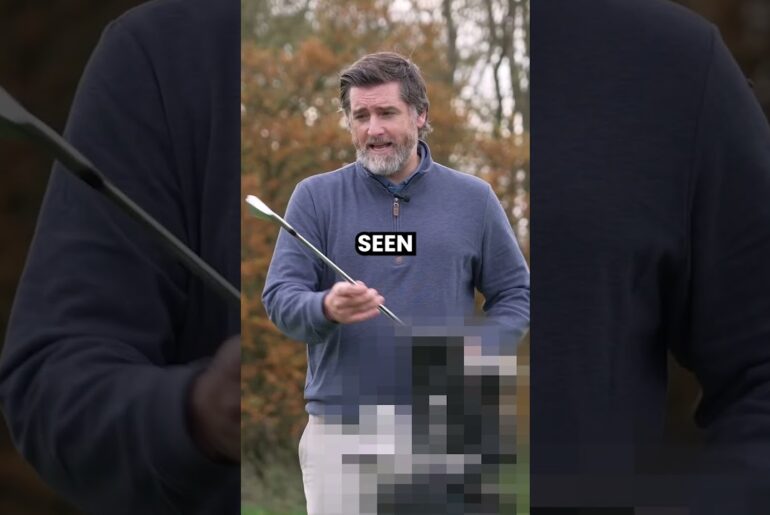In this video, I describe the evolution of the golf ball and the notorious rise of Titlist’s Pro-V1. How golf balls were designed in a specific way but it wasn’t until the Pro-V1 which brought two characteristics which shaped modern-day golf balls. Power and Control. The innovation by Titleist has created a weapon which golfers are hitting the ball farther and farther. However, what seems like a good thing on its surface has actually brought an interesting debate to the golf world. Are Golf balls becoming too powerful? Since the 1980s, driving distance has increased substantially. Old golf courses are to designed to withstand this generational change. Par-5s are now becoming Par 3s. More land mass is having to be used and complete overhauls of golf courses are underway in order to accommodate this change. This begs the question, are golf balls becoming too powerful?
If you enjoyed this video please let me know by subscribing and hitting ht like button!








29 Comments
Thanks everyone for watching! If you want more content like this, hit the subscribe button! I enjoyed putting this together
You can make fairways and greens as narrow as you want. Distance isn’t the problem.
Weird that specialized athletes and light years of advancement in training/nutrition haven’t at all impacted driving distance……
I think bunker and tree placement could fix this to a large part.
How about all golf courses add an extra stroke for every hole and make Pros go back to the 2001 Titleist ProV1. This would be so much better for everybody. Let amateurs use any new technology on the market. Make only two style of balls. One for amateur play and one for tournaments and Pros. Problem solved. Oh and make the hole an 1" bigger😂😂.
Make some courses irons only. Easy fix.
Despite this average handicaps aren’t declining. Leave us be. Hitting it further makes golf more fun.
The Strata Tour 90 was the first ball of this type, debuting in 1998.
Thumbs down. It’s not just the ball that’s creating distance. It’s increased in athleticism, efficiency and swing speed 20 years ago you’d never see the world top 25 golfers in the gym. Now those folks are working out 7 days a week. The advent of swing radars also allowed players to really fine tune the optimal launch numbers and get as close to maximum potential distance as possible. Plus what the other guy said. If you want to roll back the ball do it for the pro but leave us ams alone. I’ll play pro v’s till the end.
…let’s face it, if your swing speed is under 100 mph, then you may as well buy a bag of 100 used balls at Walmart…and 99% of golfers swing sub 100…
Its a pity that hitting a prov1 feels like hitting a rock.
"Too far" is relative to the distance that a course was designed for. Every improvement from equipment to technique causes problems for courses.
Time is the biggest issue with the sport for amateurs; balls technology is more of an issue for professionals.
Ball flight paths are tightly regulated by the PGA and balls must comply with these requirements. Clubs likewise are regulated. The only factor that we cannot control is the athletic capabilities of the professional. As an amateur my drive remains limited to 200 meters or maybe a little more on a good day and accuracy or repeatability is the amateurs curse. By the way, you fail to mention the advent of Surlyn Ionomer resins into the golf ball market from DuPont and its impact on ball design both as a cover material and in intermediate layers. Today, this resin along with urethanes remain critical to ball construction. The Tiger “Nike” ball was actually made by Bridgestone of Japan under contract and was the ball he played for much of the peak of his career. He never really shifted to Nike’s own ball during the shift to Nike’s “own” ball production was actually OEM production in Taiwan. This effort was short lived as Nike failed to penetrate the professional ball market against the likes of Titelist, Callaway and TaylorMade. This lead to them shutting down the equipment business in golf, their biggest setback in targeting professional sport.
Funny how you never mentioned the already agreed upon golf ball rollback. Read up on it.
One fix might be to stop having fairways on par fives that go the whole way from tee to green. Splitting the fairway into two sections with a large area of the deep stuff running from 270 to 320 yards out from the tee would force most players to club down for the tee shot. Even narrowing the fairway to a choke point, say, just 15 yards wide with substantial rough either side at that range, might be enough. If the big hitters want to try hitting 320 on the fly to get into the second fairway, or in the latter case, think they are accurate enough to roll into the choke point… let them try.
If course designers don't want to go that extreme, start having an array of grass bunkers in the landing zone. A player using driver risks ending up in a grass bunker with a difficult lie for their second shot. Clubbing down will avoid that risk.
its also the equipment. materials, lofts, etc… to claim its just the ball is being willfully ignorant.
It seems ludicrous that they keep making balls that go farther and then they lengthen the courses or tighten them up with hazards and bunkers which make them too difficult for the average golfer to play. The ball should be rolled back to a average distance of no more than 300 yds. and all major brands should be made compliant. Or perhaps they should adopt a tour ball that all players use. I mean why is golf the only sport that doesn't have an official tour ball?
I strike a new provx 20 yds further than other balls
Just don’t make the ball go any further …. A lot of us work our butt off on the range and at the gym to be able hit ball speeds of up to 180mph. Plus golf is now more fun than ever because of longer hitters like Bryson.
In the year two thousaaaaaaaand…….in the year two thousaaaaaaand……..
golf has a bigger problem and that is getting new golfers to join and be engaged in the sport. The price of a round of golf keeps most people out of the sport. Making the toughest courses tougher won't affect new golfers, or any amateur golfers. This video tells the average golfer nothing. If you aren't near scratch golf, don't hit Pro V1 unless you like double bogies. Beginners should hit a soft and forgiving ball until they get the hang of the game.
The Strata was the first successful multilayer non wound ball.
And no piece of equipment will destroy the game. People just have a problem with the score in relation to par. Who cares. All tournaments since the beginning of time go down to the last 9 on Sunday. Everyone plays the same level equipment.
Want to reduce distance and raise scoring? Do 1 thing. Quit making the fairways so firm and tight. A longer cut will reduce driver roll and make it harder to spin irons and wedges. There ya go. Leave the equipment alone.
Golf is not just for pros. It is really for the regular daily golfer. So, the distance issue is really about pros. Also, most of the courses that the pros play are off limits to the regular golfer. And if they are not there increased distances are irrelevant to the amateur golfer. So, courses can still be built for the amateur without regard to the issue of distance.
The noise is enough when it comes off the club.
Destroying the sport? Ya right. I m amateur and get maybe 10 extra yards. Big deal.
Watch the 3rd hole at the US masters. 3 ways to play it and length may not win.
for most amateur golfers the courses being built today are NOT too short but too long with the vast majority hitting a driver less than 250 yards. this obsession with distance is driven by those golfers in the top catagory of players. elite amateur and professionals. less than 1% of all male golfers play off scratch or better so this entire conversation is about less than 1% of male golfers.
Shakespeare called it. "much ado about nothing"
Bubba didn’t win in 2013 Adam Scott did. 1:21